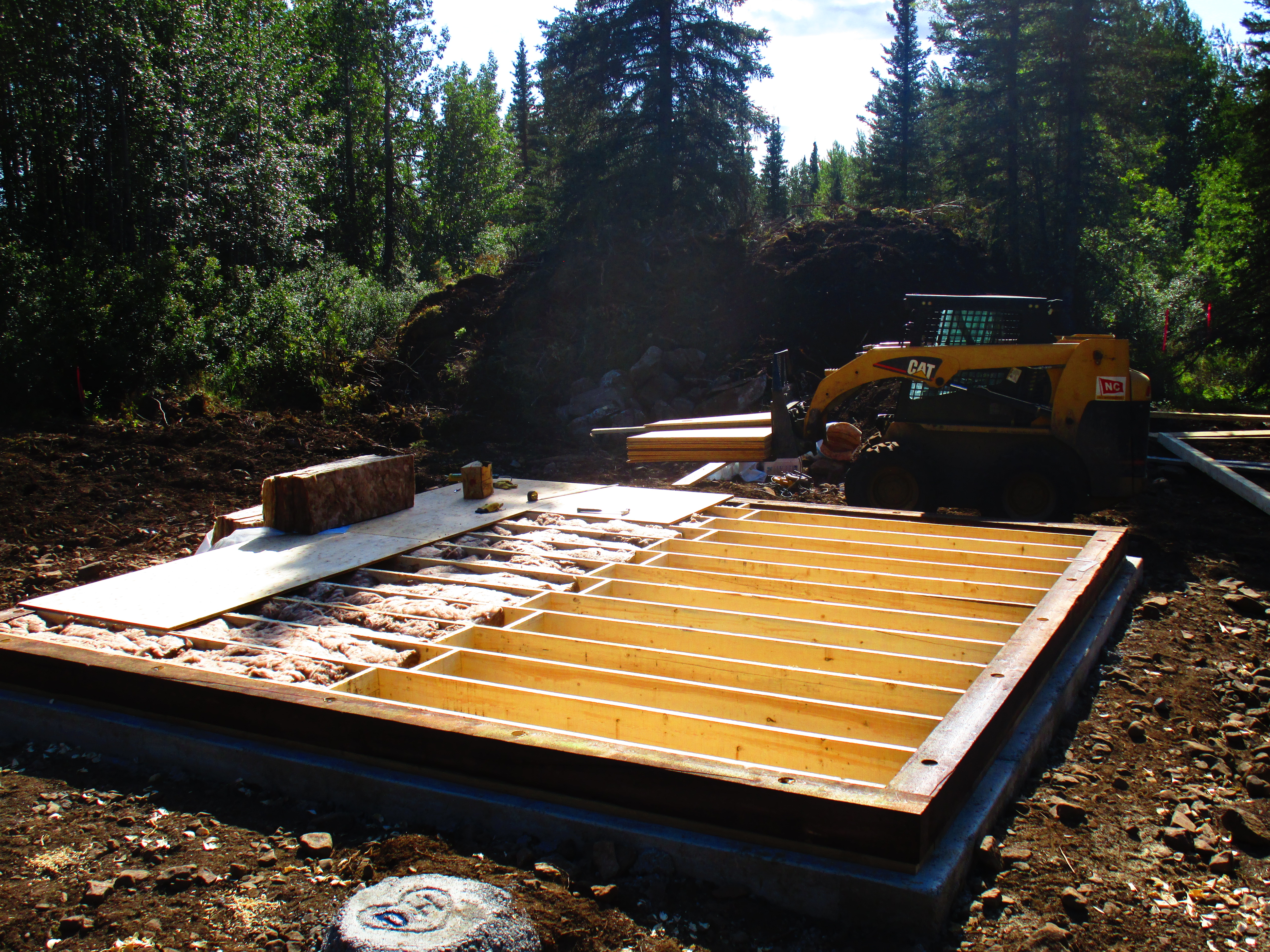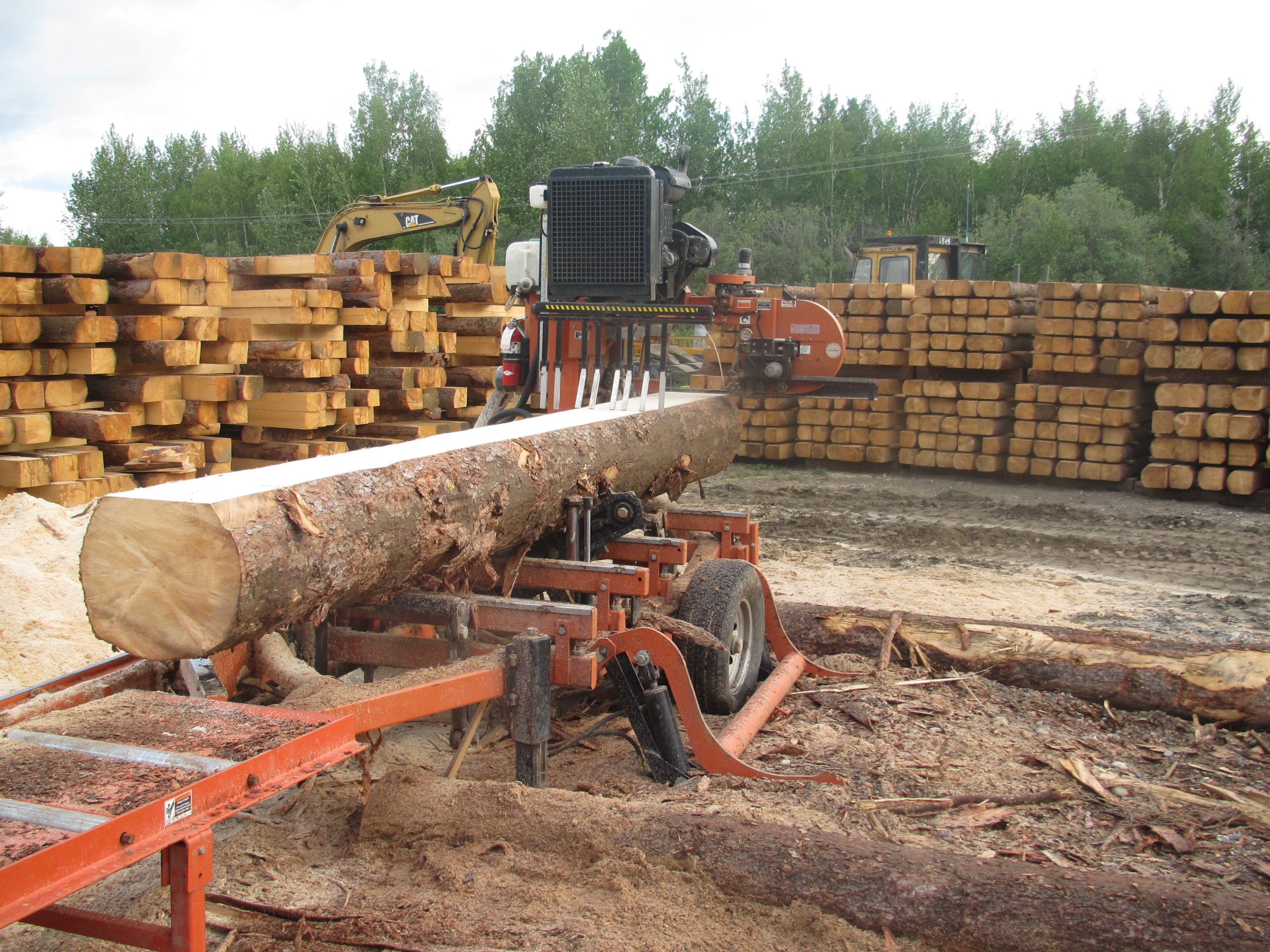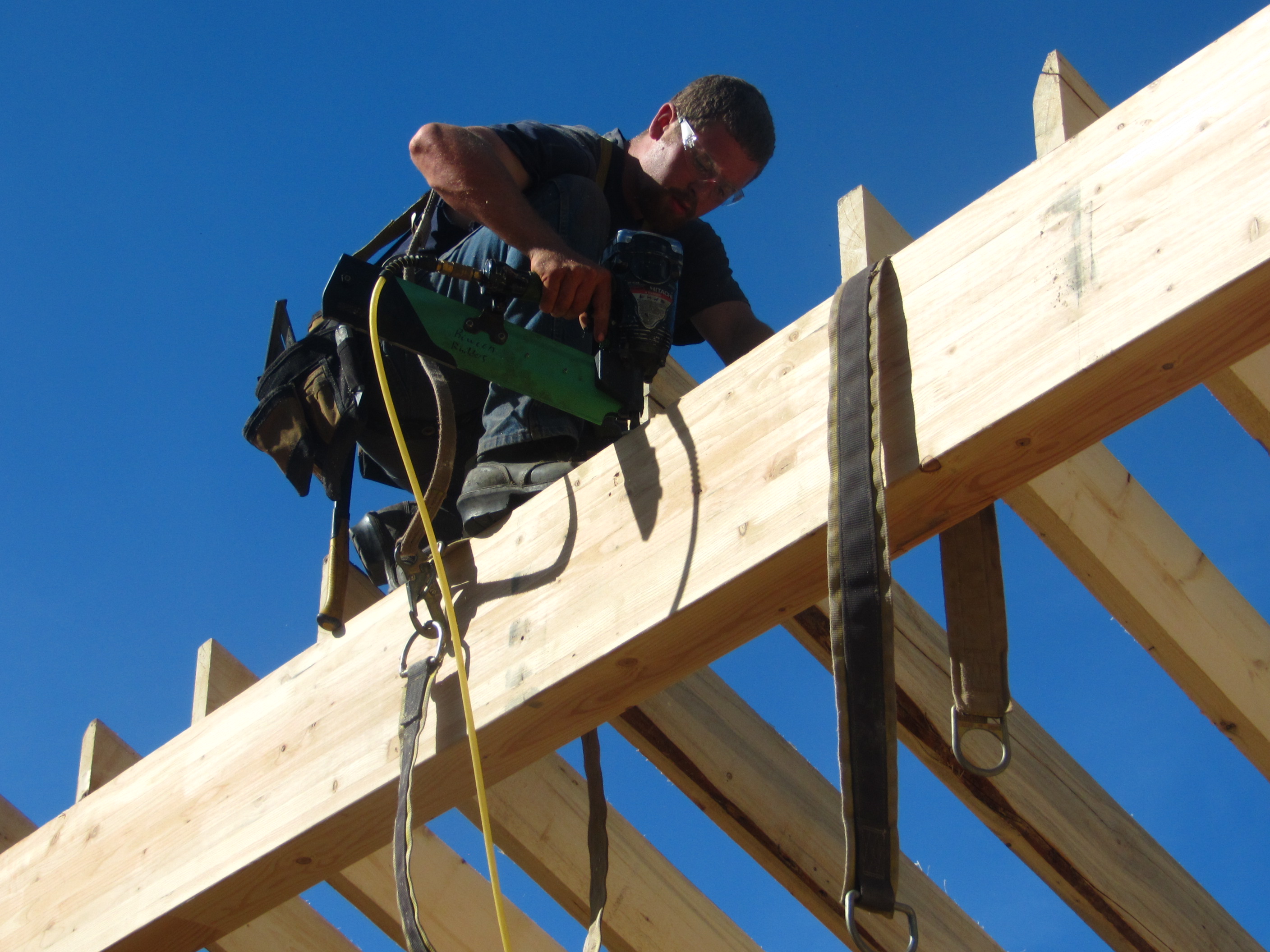Heating and Refrigeration.
- When designing a dovetail log
cabin, especially in the arctic conditions of
Alaska, it is important to consider the various
aspects of heating the place as efficiently as
possible. Heat transfer comes in three different
forms, conduction, convection, and radiation.
Convection - Heat transfer by
motion of fluids or materials.
Conduction -
Heat transfer through coupled vibrations and
collisions between particles.
Radiation - Heat transfer via
electromagnetic waves.
- It is common for rustic
dovetailed log cabins to have a stone fireplace
that heats the cabin with a cozy wood fire. The
flames from the fire are producing heat through
radiation by emitting electromagnetic waves that
transfer energy from the fire to the skin of the
person who is being warmed by the fire. As the
wood fire continues to burn, the outside of the
stone fireplace, or steel chimney will slowly
start heating up. The heating of the fireplace
comes as a result of many electrons vibrating
back and forth and colliding with each other as
a result of the added energy from heat on the
inside of the chimney. The increased vibrations
and collisions, then cause friction between
particles as they bounce around. Slowly, heat is
transferred to the outside of the fireplace by
these coupled vibrations. The heat felt on the
outside of the fireplace then is a result of
conduction.
- In order the hold the heat from
the fire inside of the cabin, it is imperative
that the cabin be properly insulated. Insulation
as defined by The New Oxford American Dictionary
is “The action of being insulated electrically
or physically; the condition of being insulated
by non-conductors, so as to prevent the passage
of electricity, heat, or sound.” In other words,
the insulation in houses is designed to act as a
barrier from the warm inside to the cold outside
by utilizing material that has a very low
thermal conductivity, so that heat cannot pass
through the material very quickly. Dovetailed
log cabins are different from conventional
cabins in that they are constructed with solid
wooden beams with gaps between them that are
filled with synthetic insulation (such as
fiberglass insulation) or natural insulation
such as mud or moss.
The Physics Behind Rising Hot Air
In addition to insulation the walls, it is
important to also insulate the floor, and the
roof. This is due to a phenomena that heat rises
and cold air sinks. The reason that hot air
rises, is because the hotter air has more
energy, and that extra energy reduces the
density of the air, and thus the weight of the
air. Since the colder air is heavier, it
naturally falls towards the earth, and in doing
so displaces the hotter air, making it rise.
With that in mind, it is important to insulate
the floor, so that that the colder air so that
no cold air seeps in from the ground outside.
The roof is important to insulate, because as
the heat rises it will concentrate near the
ceiling, and so insulation is needed to keep the
hot air from escaping.

Photo courtesy of the author.
- As mentioned in the electricity
section, incandescent bulbs create a lot of
energy loss due to heat. The heat that is a
byproduct of the light bulb comes in the form of
radiation in the same way that the fire heats
the house. Since there is a significant amount
of heat loss from the light-bulbs, the smart
homeowner will capitalize on that detail, and
turn the stove down when there are lots of
lights running.
  
Photo courtesy
of the author.
Refrigeration
- It is important to utilize some sort of
refrigeration in a log cabin in order to keep
groceries cold or frozen. The historical way to
keep groceries cold over the hot summer months,
was to harvest a lot of ice in the wintertime,
and haul it to an ice-house, where it was stored
with lots of sawdust to keep the ice and
groceries cold. Today, commercial refrigerators
have become the norm. Refrigerators such as an Ideal
gas refrigerator use work to transfer
heat from a colder object to a hotter object.
The way refrigerators work, is by compressing a
gas in order to increase it's temperature and
pressure by lowering the gas's volume by the
ideal gas relation PV=nRT where
P=pressure, V=volume, n=number of moles of gas,
T=temperature (in Kelvins) and R is the ideal
gas constant. Once the gas is compressed, the
gas flows through a heat exchanger, where the
pressure is decreased, which causes the gas to
cool down. The gas is then flows through the
refrigerator, and expels a proportion of it's
cold air. The remaining warmer air is then
compressed and heated, and ready to start the
cycle again. There is a physical limit to the
efficiency of a refrigerator though. The limit
is that the coefficient of performance (K) must
be smaller than or equal to the cold temperature
divided by the hot temperature minus the cold
temperature. The actual coefficient of
performance is measured by the heat out divided
by the work imputed or in other words, what you
get out divided by what you pay (Physics
pg#547).
|